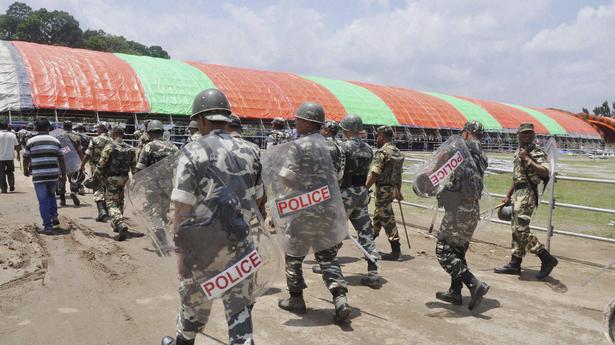
Morning Digest | Government likely to lift AFSPA in four States; exports drop 3.5% in September, and more
The Hindu
A select list of stories to read before you start your day
AFSPA retained in parts of Assam, Arunachal, Nagaland, and Manipur for another six months
The uncertainty around the culmination of the Naga peace process is one of the reasons that led to the Armed Forces (Special) Powers Act (AFSPA) being retained in some parts of Assam, Manipur, Nagaland, and Arunachal Pradesh for another six months, according to government officials.
Exports drop 3.5% in September, imports slide below $60 billion for the first time in seven months
India’s goods exports dropped 3.5% in September to $32.62 billion, while imports slid below $60 billion for the first time in seven months to $59.35 billion, 5.44% higher than a year ago. The trade deficit stood at $26.73 billion for the month.
Online betting platform advertisements still visible on TV and digital media: I&B Ministry
The Information and Broadcasting Ministry advised online news websites, OTT platforms, and private TV channels to refrain from publishing or broadcasting advertisements of online betting platforms or any surrogate product depicting them.
BJP trying to win back OBC leaders before 2024 Lok Sabha polls

The Union Budget unveiled on February 1, 2025, has come at a time of unprecedented global uncertainty and a flagging domestic economy. The real GDP growth is estimated at 6.4% for 2024-25 and between 6.3-6.8% for 2025-26, a far cry from >8 percent growth required annually to make India a developed nation by 2047. While much attention has been devoted to the demand stimulus through income tax cuts, not enough is said about the proposed reforms in urban development, tariff rationalisation, and regulatory simplification aimed at making Indian cities and corporates more competitive. Since the majority of economic activity is located in cities (urban areas account for ~55% of GDP) and produced by large corporates (~40% of the national output and 55% of India’s exports), the above-mentioned reforms have a pivotal role in improving India’s trend growth rate. Below we unpack each reform.












